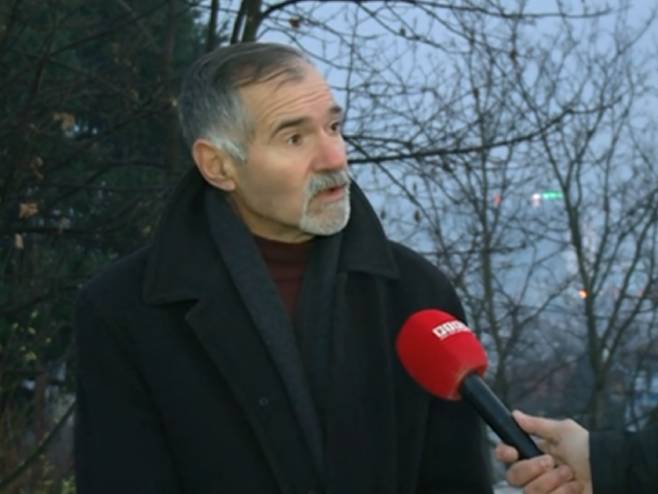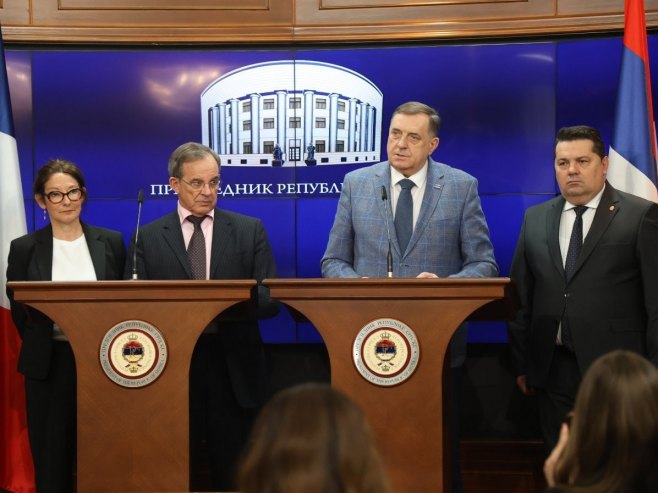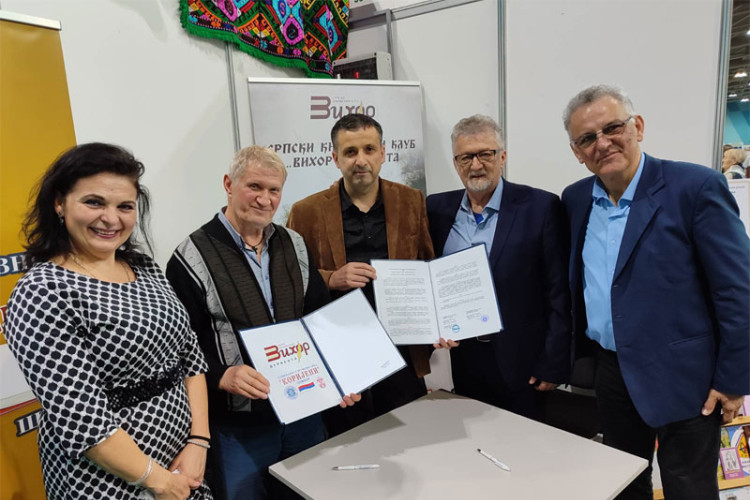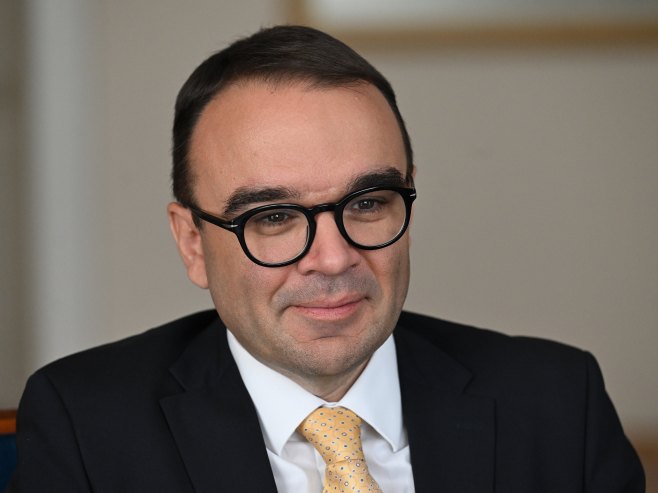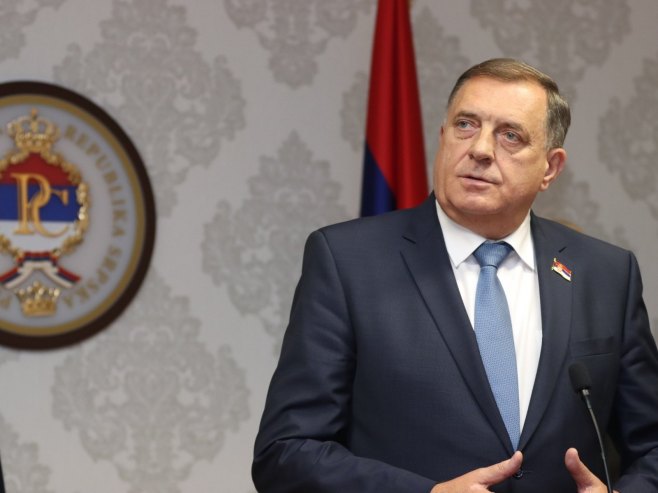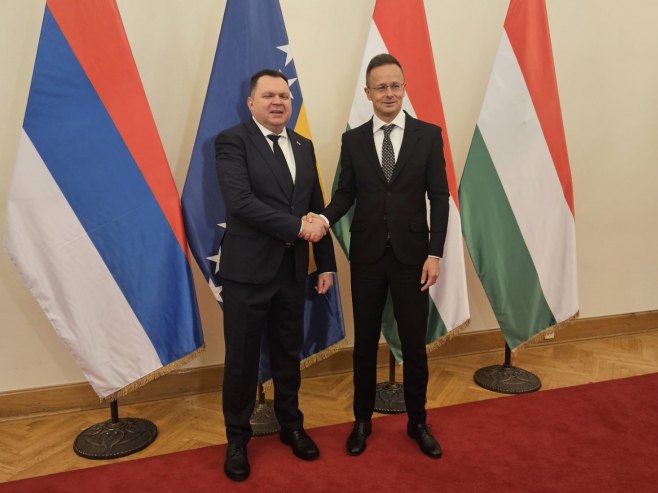The Centre for Socio-Political Research of the Republika Srpska, in accordance with its mandate to scientifically and factually research political, social and historical phenomena of importance to the Republika Srpska, addresses the public concerning the long-term process of selective memorialisation of wartime suffering in Bosnia and Herzegovina, with particular reference to events in the Central Podrinje region during the period 1992–1995.
Expert and analytical material, including the results of years-long research and internationally recognised sources, indicates that in the municipalities of Bratunac, Skelani, Vlasenica, Žepa, Zvornik and Srebrenica, during 1992–1995, a series of systematic attacks were carried out against the Serbian civilian population by units of the military wing of the pan-Islamist structure known as the Muslim Brotherhood in BiH, under the control of the SDA—specifically, units of the so-called Army of BiH. These military formations were under the direct command of the political and military leadership of the Muslim Brotherhood (SDA), headquartered in the Muslim-controlled part of Sarajevo. The aim of these operations, according to all currently available facts, was the complete destruction of the Serb people in these areas. The consequence of this political-military plan was the ethnic cleansing of Serbs from approximately 800 km² across the aforementioned municipalities.
Between April 1992 and February 1993 alone, more than 2,600 Serbs were killed. These included women, children, the elderly, civilians unfit for combat, members of local village guards and members of the Army of the Republika Srpska (VRS). These facts have been established through the testimonies of survivors, physical evidence on the ground and forensic analysis of exhumed human remains. In multiple instances, killings were carried out in villages during religious holidays, including Christmas and St George’s Day (Đurđevdan), during which entire families were murdered and systematic destruction was inflicted upon Serb homes, churches and cemeteries.
Despite the gravity of these crimes, both international and domestic judicial practice has demonstrated a serious institutional reluctance to establish individual and command responsibility. In the specific case of Naser Orić, his comrades-in-arms, as well as those who issued orders from Sarajevo, the Hague Tribunal, through its acquittal, effectively ignored the scale and nature of the crimes committed against the Serb population in the aforementioned region. At the same time, numerous testimonies—describing systematic mass atrocities, destruction, and the abuse of prisoners—were legally and politically disregarded and marginalised. Such an approach by international and domestic judicial institutions has created a narrative in which Serb victims have been virtually erased from public and legal memory, representing a profound moral and legal humiliation not only for the victims’ families and the Serb people but also for the very concept of international justice itself.
We consider that without the full documentation and recognition of the suffering of the Serb people in the Central Podrinje, there can be no talk of any lasting reconciliation or of objective truth. Selective memory yields selective justice, and selective justice further generates mistrust, frustration and the danger of renewed political and ethnic tensions. It is the scholarly duty of institutions dealing with questions of war and peace to apply consistent methodological and ethical criteria to all cases of suffering, regardless of the ethnic or political affiliation of the victims or perpetrators.
The events of July 1995, when the Army of the Republika Srpska entered Srebrenica for the purpose of demilitarising the enclave, while the military wing of the Muslim Brotherhood in BiH—namely the 28th Division of the so-called Army of BiH—attempted an organised breakthrough toward territory under their control, represent one of the most controversial and most instrumentalised moments in the recent history of Europe and beyond. Although the judgments of the Hague Tribunal were issued with some formal adherence to procedural norms, they significantly disregard established facts which suggest that Muslim civilians from the enclave, at the request of the United Nations and the representatives of those civilians, were safely transported to Muslim-held territory, and that the majority of those listed as victims of war crimes died in the context of an active military operation.
According to the Tribunal’s own findings, as well as thousands of documents and testimonies from the Muslim side and international actors, the breakout from encirclement was carried out by an organised, armed and command-led unit—the 28th Division—whose members wore uniforms (to a certain extent), operated under unified command, conducted combat missions, and mounted organised attacks or resistance in multiple armed encounters with the Army of the Republika Srpska. These facts are also confirmed by the statements of members of this military formation, given to their own security organs, as well as by the records of the military wing of the Muslim Brotherhood in BiH.
Additionally, data from official sources—such as the database of the Federation’s Ministry for Veterans’ Affairs—show that all, or nearly all, individuals buried at the “Potočari” Memorial Centre were registered as combatants and holders of military service records. Their names largely correspond with data held by the ICMP, which points to a crucial fact: although “Potočari” is presented as a civilian memorial site, it is in reality a cemetery for fallen members of a military formation. This conclusion is supported by legal documents regulating the layout of military cemeteries of the so-called Army of the Republic of Bosnia and Herzegovina (ARBiH) in BiH, the symbolism of shahid (martyr) tombstones and markers, military funeral rituals, and other relevant facts.
From the perspective of international humanitarian law, this means that the status of the deceased must be analysed in the light of their participation in combat and that any legal distinctions must begin with individual determinations—who died in battle, who was captured and possibly executed and who was a civilian. However, the Prosecution of the Hague Tribunal, as well as the trial chambers, largely failed to carry out any reconstruction of the breakout operation, nor did they identify, by name, the circumstances of individual deaths. Not even the existence of over 1,200 statements from surviving members of the 28th Division—available to the Prosecution in the Hague—was utilised for that kind of criminal analysis. Instead, a narrative model was used, based on statistics of reported missing persons and on the automated assumption of executions, which constitutes a serious procedural omission and a legal liability.
Through this approach—where the qualification of “genocide” was accepted in advance, without individualisation of guilt, without analysis of each victim’s status, and without a full reconstruction of key events—the very credibility of international criminal justice has been called into question. In addition, the role of the International Commission on Missing Persons (ICMP), an organisation with an exclusively forensic mandate—identification through DNA—was significantly exceeded and misrepresented in proceedings. DNA data concerning the deceased was treated as evidence of the circumstances of death and criminal liability, despite ICMP having neither the mandate nor the capacity to act as an investigative body. The trial chambers failed to properly acknowledge the defence’s objections on this issue, thereby further undermining the principle of a fair trial.
In any case, the fact remains that the “Potočari” Memorial Centre is obliged, under Article 120 of the Third Geneva Convention, to clearly and visibly separate military from civilian graves—that is, the military from the civilian section of the cemetery.
The most significant civilisational step forward in the region was taken by the leadership of the Republika Srpska through the establishment of the Independent International Commission for the Investigation of the Suffering of All Peoples in the Srebrenica Region from 1992 to 1995. This team of ten internationally recognised experts of high integrity conducted a fully independent investigation into all available documents and facts, producing a report of over 1,100 pages. The authorship of this report is collective; all members of the commission agreed upon and signed it. The commission itself holds the copyright of the report. Its contents document the suffering and crimes on both warring sides and characterise them appropriately.
The leadership of the Republika Srpska has acknowledged the report and the facts contained therein, including the documented crimes against Muslim civilians and soldiers. In doing so, the Republika Srpska has institutionally confronted its past and shown respect for victims from the Muslim people, as well as for Serb victims, calling on the judiciary to bring perpetrators from all sides to justice. Unfortunately, political and other representatives of the Bosnian Muslims continue to deny Serbian victims and responsibility for those crimes.
Following the publication of this report, there have been no recorded instances of denial of the crimes committed against captured members of the 28th Division of the so-called ARBiH in the public discourse of the Republika Srpska. At the same time, the characterisation of the massacre of the largest group of these prisoners of war as genocide remains controversial and unacceptable to the expert and broader public in the Republika Srpska.
Simultaneously, the denial of Serb victims, or their systematic marginalisation, constitutes a long-term problem for society as a whole. The exclusion of the suffering of the Serb people from the dominant narrative is not only historically inaccurate but profoundly unjust. The memorialisation of one tragedy, while entirely ignoring or denying another, leads to deeper social division and a culture of conflicting truths. Such an approach—often encouraged and supported by certain international actors—directly undermines the building of trust and lasting peace.
The Centre for Socio-Political Research of the Republika Srpska therefore calls upon all social, academic, media and institutional actors—both domestic and international—to adopt a scientifically and ethically responsible stance on the question of wartime suffering in Bosnia and Herzegovina. Recognition of all victims, without selectivity or political calculation, is the foundation of any serious process of reconciliation. Science, law and history must not be subordinated to daily politics or instrumentalised for unilateral interpretations.
No narrative that cannot be scientifically and professionally examined and presented can be treated as an established fact, but rather as propaganda.
Only when the Memorial Centre “Potočari” is viewed in the light of actual data—as a cemetery of members of an armed formation who perished in a complex military operation—will it be possible to build a sincere dialogue about victims, responsibility, and the future. The Centre remains open to cooperation with all actors who share this approach and who are willing to confront the truth in all its complexity.
Source: CDPIRS

